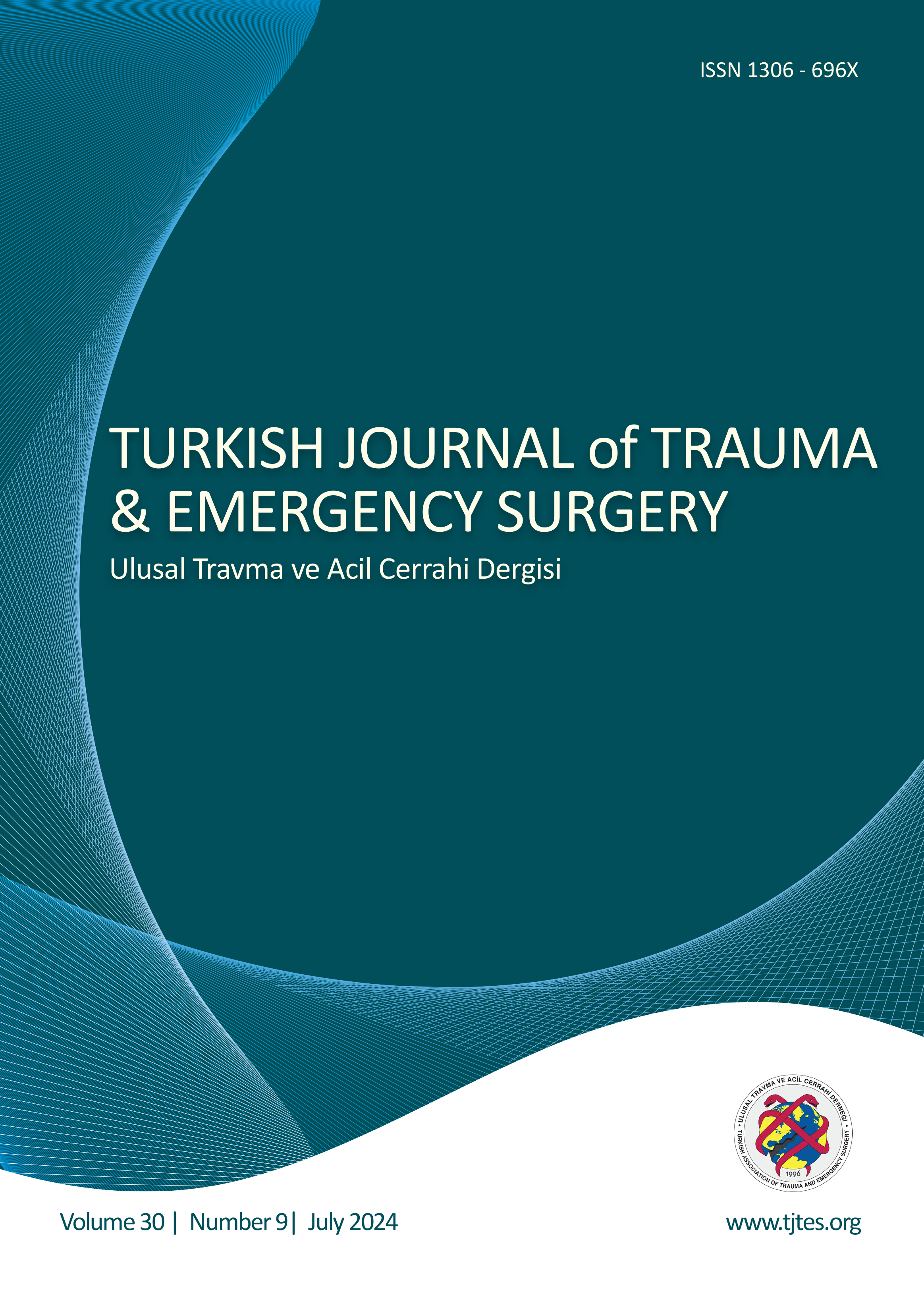Hızlı Arama
Robotik radikal prostatektomide 8 mmHg ve 12 mmHg pnömoperiton basınçlarının karşılaştırılması: Anesteziolojik ve cerrahi perspektiften prospektif randomize kontrollü çalışma
Mete Manici1, İbrahim Can Aykanat2, Doga Simsek1, Kayhan Tarim3, Yavuz Gurkan1, Abdullah Erdem Canda31Koç Üniversitesi Tıp Fakültesi, Anesteziyoloji Anabilim Dalı, İstanbul, Türkiye2Koç Üniversitesi Hastanesi, Üroloji Kliniği, İstanbul, Türkiye
3Koç Üniversitesi Tıp Fakültesi, Üroloji Anabilim Dalı, İstanbul, Türkiye
AMAÇ: Robot destekli laparoskopik radikal prostatektomi (RARP) ameliyatında 8 mmHg veya 12 mmHg pnömoperitonum basınç (PNP) farklılıklarının operatif, postoperatif ve anesteziyolojik parametreler üzerine etkisinin karşılaştırılması amaçlanmaktadır.
GEREÇ VE YÖNTEM: Prospektif dizayna sahip çalışmamızda, RARP ameliyatında deneyimli tek cerrah tarafından yapılan 43 hasta düşük basınç (8 mmHg - Grup I) veya standart basınç (12 mmHg - Grup II) gruplarına PNP'ye göre rastgele randomize edildi. Hastaların operatif ve postoperatif parametreleri ürolojik ve anesteziyolojik açıdan değerlendirildi. Tüm hastalarda AirSeal® insuflasyon sistemi kullanıldı.
BULGULAR: Konsol süresi, tahmini kan kaybı, ilk flatusa kadar geçen süre ve hastanede kalış süresi açısından gruplar arasında istatistiksel olarak anlamlı bir fark bulunmamıştır. PNP, 8 mmHg grubundaki 6 hastada ve 12 mmHg grubundaki 2 hastada kanama nedeniyle 15 mmHg ya geçici süre yükseltildi. İlk insizyondan sonra 5. dakikadaki kalp hızı dışında, kardiak, kan basıncı, ventilasyon ve verilen ilaç parametreleri açısından gruplar arasında fark gözlenmemiştir. Kalp hızı, Grup I'de anlamlı derecede düşük olarak gözlemlendi (54.4 vs 68.8, p=0.006). Cerrahi sırasında, anestezistler tarafından yapılan müdahalelerin sayısı (ilaç uygulamaları, ventilatör yönetimi vb.) Grup I'de anlamlı derecede daha düşük izlendi (6.1 vs 9.6, p=0.041).
SONUÇ: RARP ameliyatında 8 mmHg PNP basıncı, 12 mmHg basınca göre operatif parametrelerde farklılık göstermezken, kardiyovasküler ve solunum sistemini tehlikeye atmamak için gereken anestezi müdahalesi gereksiniminin daha az olması avantajına sahiptir.
Anahtar Kelimeler: Airseal® insuflatör sistemi, düşük basınç pnömoperitonum; intraperitoneal basınç; intraoperatif sonuçlar; pnömoperitonum basıncı (PNP); robot yardımlı laparoskopik radikal prostatektomi.
Anesthesiological and surgical perspectives on using 8 mmHg versus 12 mmHg pneumoperitoneum pressures during robotic radical prostatectomy: Results of a prospective randomized study
Mete Manici1, İbrahim Can Aykanat2, Doga Simsek1, Kayhan Tarim3, Yavuz Gurkan1, Abdullah Erdem Canda31Department of Anesthesiology, Koc University School of Medicine, Istanbul-Turkiye2Urology Clinic, Koc University Hospital, Istanbul-Turkiye
3Department of Urology, Koc University School of Medicine, Istanbul-Turkiye
BACKGROUND: This study aims to compare the effects of 8 mmHg and 12 mmHg pneumoperitoneum (PNP) pressures on operative, postoperative, and anesthesiological parameters in robot-assisted laparoscopic radical prostatectomy (RARP).
METHODS: In this prospective study, 43 patients undergoing RARP performed by a single experienced surgeon were randomly assigned to either the low-pressure group (8 mmHg - Group I) or the standard-pressure group (12 mmHg - Group II). We evaluated the operative and postoperative parameters from both urological and anesthesiological perspectives. All patients were treated using the AirSeal® insufflation system.
RESULTS: No statistically significant differences were observed between the groups in terms of console time, estimated blood loss, time to first flatus, or hospital length of stay. PNP was increased due to bleeding in six patients in the 8 mmHg group and two patients in the 12 mmHg group. Except for the heart rate measured five minutes after the initial incision, there were no observed differences between the groups in terms of blood pressure, ventilation, and administered medications. The heart rate was significantly lower in Group I (54.4 vs. 68.8, p=0.006). Additionally, during the surgery, the number of manipulations performed by the anesthesiologists, including drug administrations and ventilator management, was significantly lower in Group I (6.1 vs. 9.6, p=0.041).
CONCLUSION: In RARP, while the 8 mmHg PNP pressure does not demonstrate differences in operative parameters compared to the 12 mmHg pressure, it offers the advantage of requiring fewer anesthetic interventions, thus minimizing the impact on cardiovascular and respiratory systems.
Keywords: Pneumoperitoneum pressure (PNP), low pressure pneumoperitoneum; AirSeal® insufflation system; robot-assisted radical prostatectomy (RARP); intraoperative outcomes; intra-abdominal pressure.
Makale Dili: İngilizce





